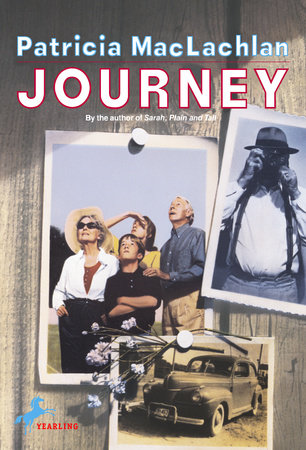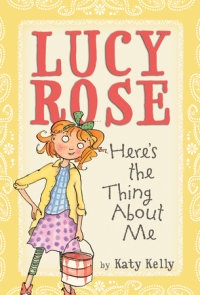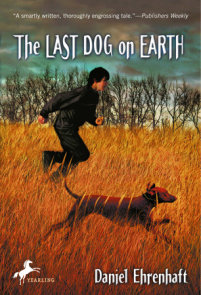TEACHING GUIDE
ABOUT THIS BOOK
During the summer of his eleventh year, Journey searches for reasons why his mother abandoned him and his older sister, Cat. Nurtured by loving grandparents, both children deal with their mother’s absence in different ways. Journey is sad and angry, and spends endless hours trying to piece together old family photographs that were shredded by his unstable mother. Cat stays busy helping her grandmother around the farm. Grandfather, a wise and caring man, uses his camera and love of photography to help the children find a past and come to terms with their mother’s departure. By the end of the novel, both children learn that a family means more than having a mother and father in the home.
ABOUT THIS AUTHOR
Born in Cheyenne, Wyoming, Patricia MacLachlan spent several years in Minnesota before moving to the East, where she graduated from the University of Connecticut. She later taught English, married, and had three children.
During this time, she wrote a series of journal articles on adoption and foster mothers that had a major impact on her life. She says, "It was clear to me that much of the focus of my writing was sharpened by my involvement and concern for families and children. This interest, coupled with my commitment to children’s literature, provided the basis for my decision to write for children–something I had always wanted to do."
Patricia MacLachlan has written numerous critically acclaimed books for children of all ages, including the 1986 Newbery Medal winner, Sarah Plain and Tall, and Journey and Baby, both of which were named ALA Notable Books and ALA Best Books for Young Adults.
TEACHING IDEAS
In this short novel, MacLachlan tells a remarkable story that deals with such themes as abandonment, denial, and developing a sense of family. Young readers will be emotionally connected to Journey and Cat as they search for a past and begin their journey toward realizing the true meaning of family. In addition to these themes, this book lends itself to interdisciplinary units in the areas of language arts, social studies, science, careers, art and music. Whether the novel is read aloud to an entire class or read individually by students, this guide offers teaching suggestions that will help students grasp the overall meaning of the book.
Suggested Classroom Activities
Pre-Reading Activity
Photographs may mean different things to different people. Some may see only what is in the picture. Others may see a story evolving. Display several old photographs of people or families, and ask students to study the pictures and write a short story about what they see. Encourage the students to share their stories orally in class.
Thematic Connections
Abandonment
Grandfather knows that Liddie, Journey’s mother, isn’t coming back. Journey, however, refuses to believe that his mother is gone forever. How do you think Grandfather knows that Journey’s mother won’t return? Find clues in the book that reveal that Liddie is a restless person who needs something other than her two children and a home. Compare and contrast the way Journey and Cat deal with the reality that their mother has abandoned them.
Denial
Cat says, "You know things, Journey. You just don’t want to believe them. You believe what you want." (page 34) What does Journey want to believe? How does grandfather lead Journey toward facing the truth? How is "believing what you want to believe" a common form of denial? Why does it sometimes take another person to help someone accept reality?
Family and Relationships
Grandfather wants to give Journey and Cat a sense of family (page 73). Ask students to define "family." Discuss how the grandparents create a sense of family in their home. What things do they do together? How do they show love for one another? Ask students to write a diary entry that Journey might write describing his family at the end of the novel.
Interdisciplinary Connections
Language Arts
Introduce the concept of literary symbolism to the class. Ask them to discuss the symbolism in Journey’s name. How might the arrival of the stray cat be considered symbolic in light of the overall theme of the novel?
Patricia MacLachlan has chosen a bucolic setting for the novel. Ask students to find the meaning of the word bucolic. MacLachlan uses similes to create visual images of things that describe the setting of the story (for example, "with mists that lay like lace over the meadows"–page 26). Display a poster or photograph of a bucolic scene, and ask students to write similes describing what they see.
Social Studies
The family structure in America has changed greatly in the past thirty years. Ask students to use an almanac to gather statistics regarding the number of children living with grandparents rather than parents. Have them construct a graph showing the growth of this type of family structure from 1970-93.
Science
Journey says that his grandmother smells of lilacs when she comes in from her flower garden. Ask students to use reference books to locate the types of flowers that grow in their area in the summer. Invite a florist to speak to the class about the flowers that are most commonly used in floral arrangements. Where do they get the flowers they use? Which flowers stay fresh for the longest time? Which have the best aroma?
Careers
Journey enjoys photographs so much. What are his options for a career in photography? What type of training is required? Have students locate information about one of the following famous photographers: Ansel Adams, Edward Steichen, Alfred Stieglitz, Annie Liebowitz, William Henry Jackson, and Eugene W. Smith. How did these people turn their talents and interest in photography into successful careers?
Art
Photography is considered an art form. Have students determine the elements of a fine work of art. Place the students in small groups, and give each group several well-known photographs to study. Ask them to analyze each photograph and evaluate its composition.
Music
Many people use music to express or soothe their emotions. Journey’s grandmother plays the flute. What instrument might Journey use to express his emotions? What instrument might Cat choose?
Teaching Ideas prepared by Pat Scales, Library Media Specialist, Greenville Middle School, Greenville, SC.
VOCABULARY
Ask students to use the context of the story to define the following words: introspection, metronome, groused, and besotted. Encourage them to locate unfamiliar words and attempt to define them. Then ask them to use a dictionary to check their definitions.
AWARDS
An ALA Best Book For Young Adults
A Coretta Scott King Genesis Award Winner
A Publishers Weekly Flying Start
REVIEWS
* "A poignant account of self-discovery, convincingly hopeful and steadfast in its refusal to settle for easy solutions." — Publishers Weekly, Starred
"A compelling portrait of a young woman trying to turn dreams into reality. . . . The book’s detailed evocation of its world and its refusal to engage in easy sentimental triumph gives it an authenticity that readers will appreciate." — Bulletin of the Center for Children’s Books, Recommended
"A fine first novel dealing with the challenge of trying to break into a profession that does not make much room for African Americans." — School Library Journal
"[A] compelling first novel about growing up, a summer of dance, and the haunting, competitive world of classical ballet. Readers will be rooting for Vicki all the way." — Kirkus Reviews
"`A thing doesn’t have to be perfect to be fine.’ And that goes for life, too. Things can be good enough. It takes the whole of this spare story for Journey to come to understand that fact…there is some wonderful emotion here to which children will instinctively respond. MacLachlan’s writing, when at its best, vibrates to the heart."–Boxed, Booklist
"In supple, exquisitely economical style, MacLachlan (Sarah, Plain and Tall, Newbery Award, 1986) unfolds Journey’s discoveries and insights… Vintage MacLachlan: uniquely memorable people; a funny, pungent, compact, and wonderfully wise story."–Pointer, Kirkus Reviews
"Her skillful use of first-person narrative pulls readers into the center of Journey’s life and rounds out the other characters marvelously. As Grandfather begins taking photographs to give Journey a sense of family, photos become symbolic of the family itself. MacLachlan offers no easy solutions to one of the worst situations that a child can imagine; instead she writes about it in a way that helps her readers understand more about families, including their own." –Starred, School Library Journal
"This is a spellbinding tale, lean only in its length. The author’s clipped dialogue and meticulously pared-down descriptions convey a deceptive simplicity–there are deep, intricate rumblings beneath the surface calm of MacLachlan’s words."–Boxed, Publishers Weekly
FURTHER READING
FINDING MY VOICE by Marie G. Lee[0-440-21896-9]
The House You Pass on the Way by Jacqueline Woodson[0-385-32189-9]
PIANO MAN by Joyce Sweeney[0-440-21915-9]
UNFINISHED PORTRAIT OF JESSICA by Richard Peck[0-440-21886-1]
ADDITIONAL RESOURCES
http://mrshowbiz.go.com/celebrities/people/mikhailbaryshnikov/index.html
×
Become a Member
Just for joining you’ll get personalized recommendations on your dashboard daily and features only for members.
Find Out More Join Now Sign In





















